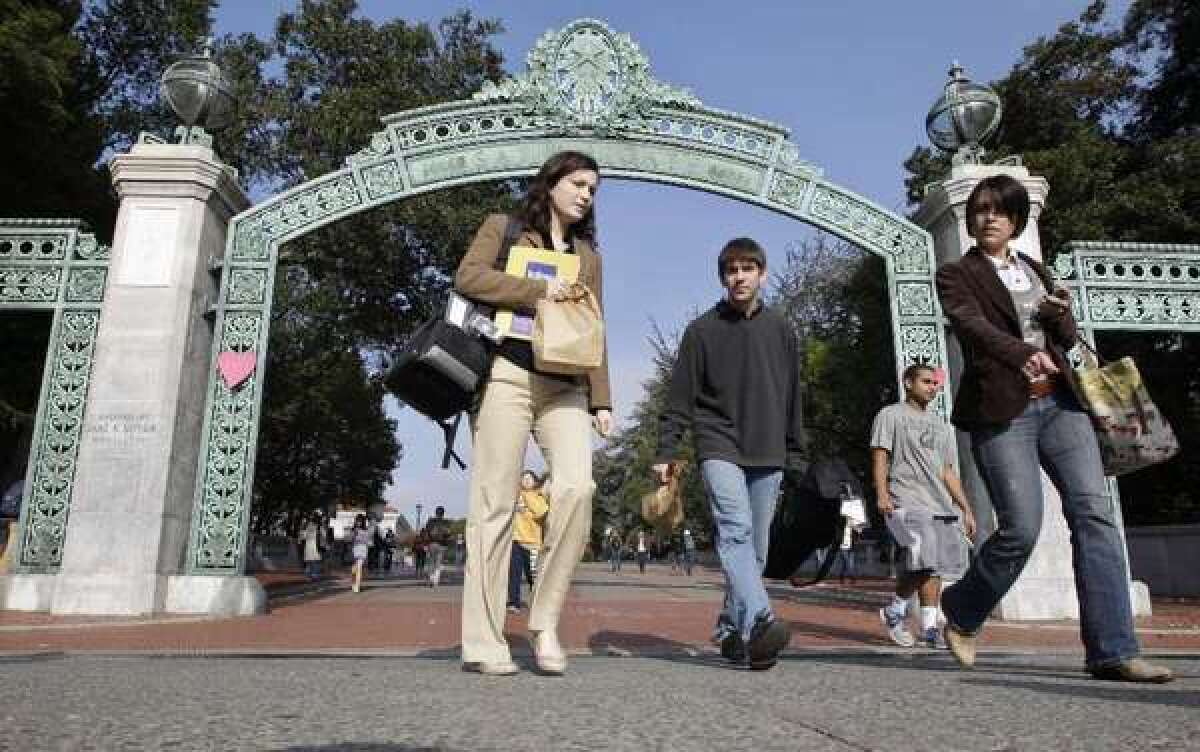Decentralize the UC system? It’s a bad idea [Blowback]

- Share via
In arguing that the individual campuses of the University of California would be better served by having a looser relationship with a drastically downsized UC office of the president, UCLA history professor David Myers relies in part on the late Clark Kerr to make his case. In a May 31 Times Op-Ed article, Myers cites the former UC president’s observation that the “university-wide system has no alumni, no students, no faculty, no sports teams, no one to cheer for it.”
Myers’ selective quotation doesn’t actually reflect Kerr’s broader view on this subject. Kerr’s bottom line on this topic is found two sentences deeper in the same paragraph of his memoir: “Yet the system can be a unit of usefulness in protecting institutional autonomy from direct state control, in obtaining funds, and in assisting in their effective distribution and use.”
UC President Mark G. Yudof recognizes that, 50 years removed from Kerr’s era, natural tensions still exist between the campuses and the central office, which he described in a report to the UC Board of Regents last month as “the constant push and pull between the competing pressures to centralize and decentralize.” He went on to say, “Much of the work in the past six years has been to balance and stabilize that relationship.”
As UC’s chief financial officer -- and a proud UCLA alumnus -- I have been engaged with many others in the quest to find the right working balance between campuses and the office of the president. This has led to efficiency measures across the system that were made possible by collaboration facilitated by the central office. For example, a centralized payroll system, to be based at UC Riverside, aims to achieve long-term cost and efficiency savings of $30 million or more annually.
Myers makes the point that Kerr was a proponent of decentralization when he became university president in 1958. But again, Kerr’s memoir, “The Blue and the Gold: A Personal Memoir of the University of California, 1949-1967,” shows his views on decentralization evolved.
“I did not sufficiently consider its ultimate limits,” he wrote. “At what point does the center become too powerless? The current system works well when the president exercises his influence aggressively.”
Kerr was a student of large organizational structures, and he discovered among them a certain pattern: “to decentralize too much and, when that did not work, to recentralize too much, and when this also did not work, to change again -- a yo-yo process in perpetuity.”
Kerr’s conclusion: “There is no permanent golden mean, no single point of steady equilibrium, only constant tensions and adjustments that seem to be inherent in large organizations.”
With multiple campuses, the largest health sciences system in the nation, national as well as campus-based research operations and a division of agriculture and natural resources, UC has a reach and leverage that cannot be duplicated by any single campus. Besides administering standardized employee benefits and pensions, engaging in governmental advocacy for the university and coordinating systemwide research collaborations, the UC system as a whole provides pooled insurance and risk management and a common debt rating and structure -- all of which have resulted in tens of millions of dollars in savings to Myers’ UCLA alone.
Kerr was concerned that separately chartered universities “would probably not receive the degree of autonomy that the University of California enjoys, within the state constitution,” and “might engage in antagonistic acts against one another or form blocs in internecine warfare.”
As one university, UC -- despite numerous funding crises caused by wildly inconsistent funding by the state during the last quarter-century -- is still seen as the gold standard for public higher education. While state funding cuts have forced steep increases in tuition, the system’s Blue and Gold Opportunity Plan -- which covers tuition and many fees for most students whose families earn $80,000 or less per year -- ensures that financially needy students are able to attend and graduate from UC campuses across the system in larger numbers than any other public research university in the nation. Faculty retention remains high. Graduation rates and the average time it takes to earn a degree continue to improve.
Yes, there always will be room for improvement, and yes, there always will be tensions and fluctuations in authority between the office of the president and the campuses. But there also always will be -- or should be -- one University of California.
ALSO:
Goldberg: We can’t trust Obama
Edward Snowden: Hero or criminal?
Gay marriage: Like it or not, polls go in only one direction
Peter Taylor is the chief financial officer in the UC office of the president.
If you would like to write a full-length response to a recent Times article, editorial or Op-Ed and would like to participate in Blowback, here are our FAQs and submission policy.
More to Read
A cure for the common opinion
Get thought-provoking perspectives with our weekly newsletter.
You may occasionally receive promotional content from the Los Angeles Times.









